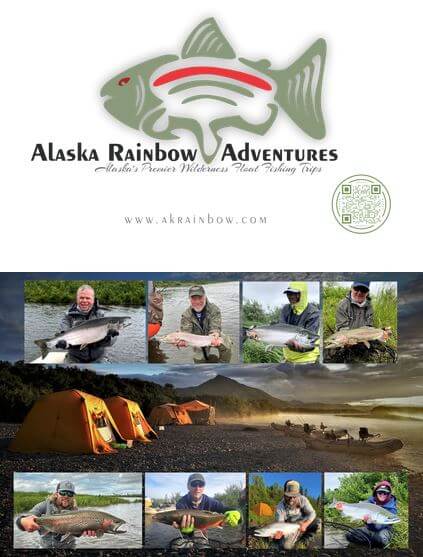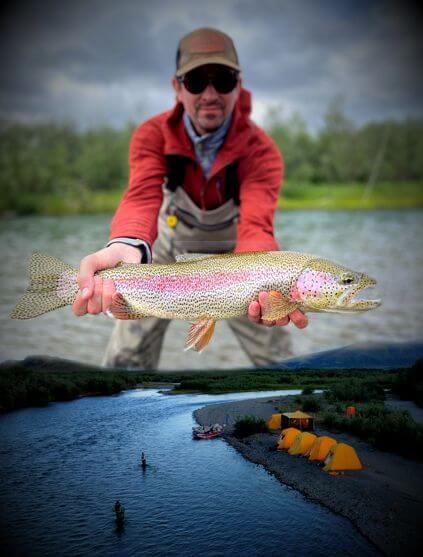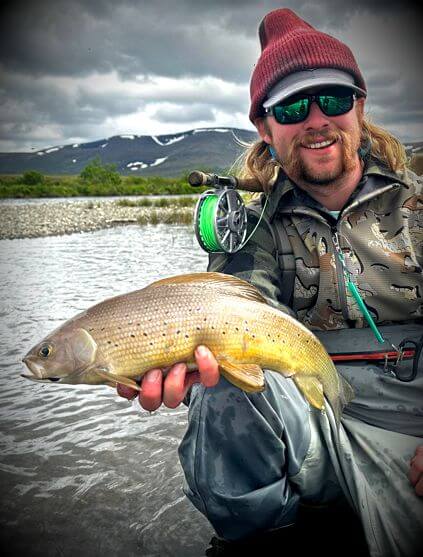
Alaska Float Fishing Trips in Southwest Alaska!
We have the Alaska float trip for you!
We take you to the most fabled of...
Alaska Float Trip Waters!
Alaska Rainbow Adventures is the premier guide service, owned and based in Alaska, that specializes in Alaska Float Fishing Trips. Under that ownership, we have operated Alaska float trips to the most productive float fishing rivers in Southwest Alaska and the Bristol Bay region for over thirty years, and we bring that experience along with us on every trip be it to the Kanektok River, Goodnews River, Arolik or any one of the many other epic Alaska waters we can take you to!
Not all Alaska float fishing trips are equal! Our approach is simple, use those three decades of Alaska float trip experience to fish and float the most prolific of Alaska's float trip waters with knowledgeable guides, custom rafts expressly set up for an Alaska float fishing trip, equip the most comfortable camps with tents built right here in Alaska that can more than handle Alaska's ever-changing weather and feed you good, hearty, and fulfilling meals that will keep you nourished and energized throughout your Alaska float fishing adventure. We do all this to provide you with the highest quality Alaska float fishing trip experience available, bar none, at the most productive times, with your safety and comfort in mind, and, of course, to catch fish!
There are few places in the world where you can enjoy the unbeatable diversity, quality, and amount of time available for fishing as offered on an Alaska Float Trip. Whether you are interested in catching leopard rainbow trout with mouse patterns onthe Kanektok River, hard-charging Coho Salmon on top water on the Goodnews River, going after diminutive Grayling on dries on the Arolik River, or any of the numerous other available species, we have you covered with over thirty years of Alaska float fishing trip experience in Bristol Bay and S.W Alaska!
All of Alaska Rainbow Adventures' guided Alaska float trips take place in remote and pristine areas of Alaska that are inaccessible by road and must be flown into, taking along everything you will need. Being this remote means you are fishing waters rarely visited by other anglers, giving you a unique and unforgettable angling experience. Moreover, a guided Alaska float trip with us is a great way to take in stunning landscapes and view undisturbed wildlife, further enhancing a memorable and enjoyable experience.
If you're interested in an Alaska float trip adventure, why not give us a call at 1-907-357-0251 or send us an email? We'll help you make your Alaska Fly Fishing dream trip a reality!


Now Booking Through 2027
Popular Alaska Fly Fishing Float Trips
Special Selections
Hot Alaska Float Trips From Our Schedule
What was said about us
Testimonials














